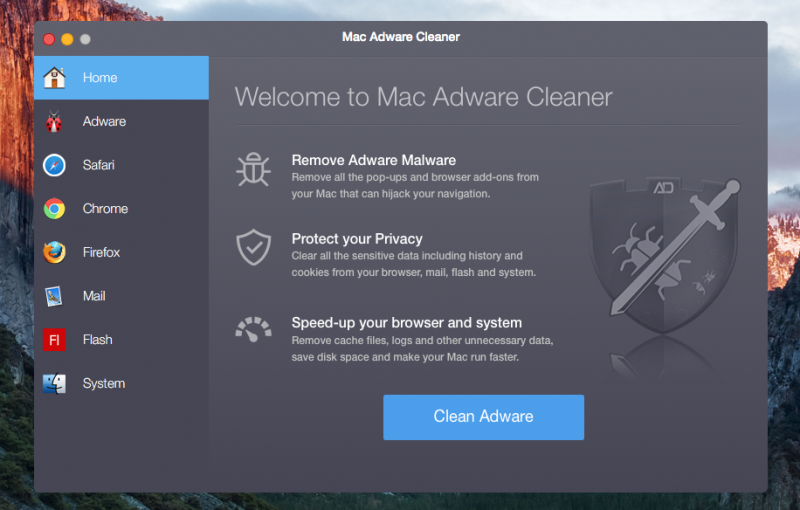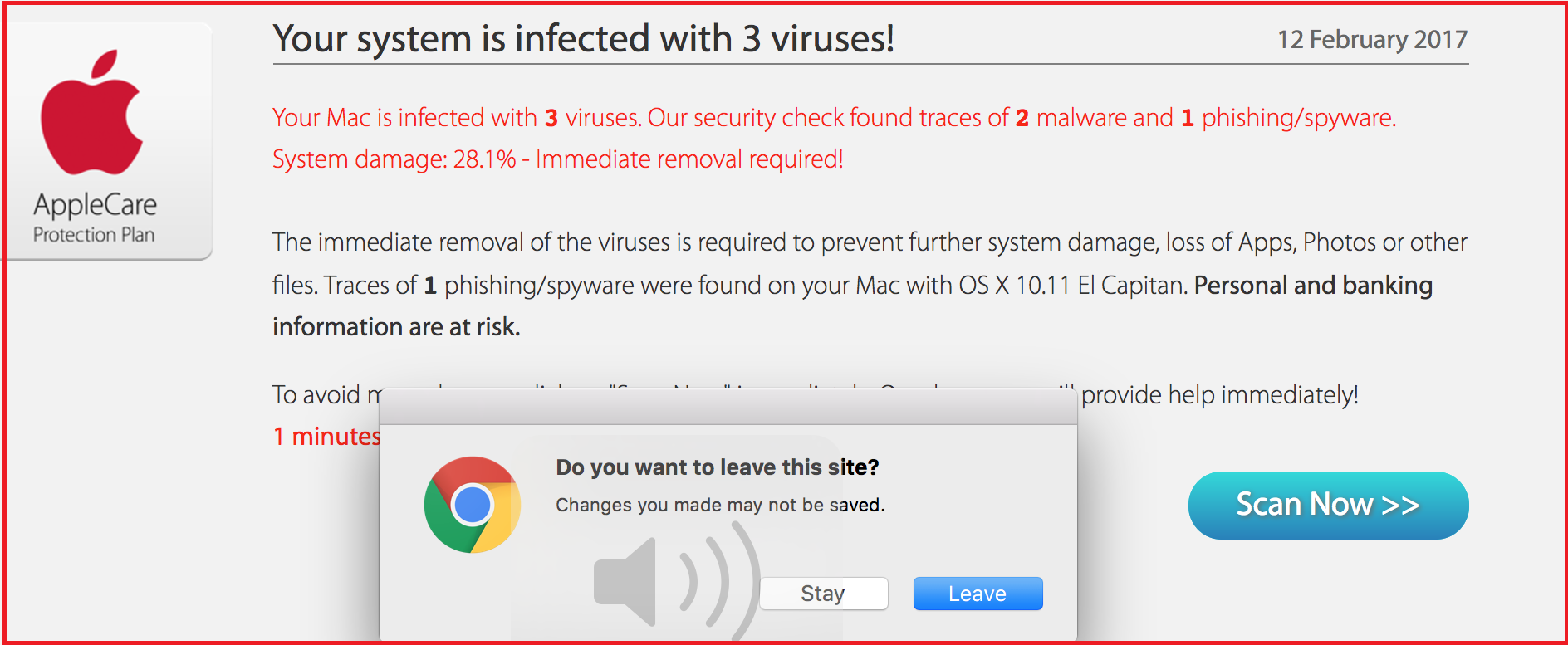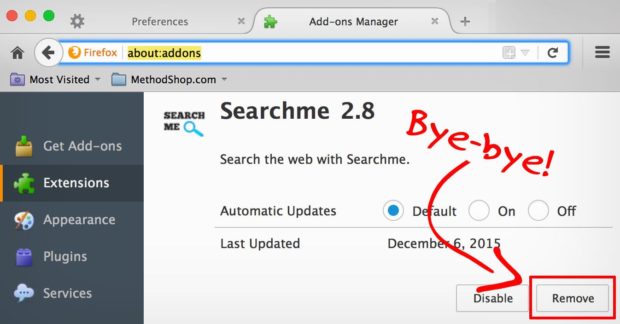Remove 'mac os is infected with spyware' virus related Google Chrome add-ons: Open Google Chrome and click the 'Chrome menu' (three horizontal lines) button located in the top-right corner of the browser window. From the drop-down menu, choose 'More Tools' and select 'Extensions'. Malwarebytes for Mac. Malwarebytes 4 takes out malware, adware, spyware, and other threats before they can infect your machine and ruin your day. It’ll keep you safe online and your Mac. SpyHunter for Mac is an anti-malware application designed specifically to address the growing threat of malware created specifically to target Mac systems. SpyHunter for Mac is built from the ground up to scan for, identify and remove malware, potentially unwanted programs (PUPs) and other objects.
Easy guide to delete FinSpy Spyware
FinSpy Spyware is the name of malware that is designed and delivered by cyber criminals for the purpose of stealing data and also takes complete control over the infected system. This banking malware can be used to record audio via microphone and video via webcam, log keystrokes, extract system information, execute remote shell commands and various other data. Once intrude, the Trojan conducts severe changes on the PC and disable the firewall programs and antivirus tool.
Additionally, keystroke logging is used to record each keyboard and mouse input and can collects logins and passwords of social media accounts and banking credentials and other similar data and share them to crooks who misuse them in various fraudulent activities like transactions, purchases and for other malicious purposes. Data enumeration feature allow network resources, users name, shares and services from a computer and other information could be used to find out the vulnerabilities in computer security.
Moreover, the spyware also allow cyber criminals to access user’s webcam, microphone and take screenshots. They could use recorded material in order to blackmail the victims and ask them to pay money. If payment is not done the recorded material will be published on some other websites or send it to relatives and friends by them. Also, FinSpy Spyware can execute various commands like shut down computer, restart, or even download and execute some files that may cause installation of dubious malware.
Last but not the least, data infiltration feature allow to transfer copied data from one device to another. In short, users who have installed malware like FinSpy Spyware on the computer could become victim of identity theft, suffer from monetary loss lose access to various personal accounts and also problem relating to online privacy, browsing safety and so on. Thus, this type of notorious malware should not be installed.
How did FinSpy Spyware intrude on my PC?
This nasty malware invade into your PC through Trojans, emails, fake software updating tools and illegal activation tool. Trojans are malicious programs that can be designed to install other programs of this kind. Once PC gets infected with Trojan, it means it will get infected with other malware as well. Spam emails are send by cyber crooks that contain malicious attachments in variety of formats such as PDF documents, exe files, archive files etc to lots of people in order to trick them.
Once recipient opens such types of files, it initiates infection process. Fake software updating tool infects PC by exploiting weaknesses of outdated software or by simply installing malware instead of promised updates. Last but not the least, cracking tools can install malicious programs rather than activate the licensed product. Thus, for all these reasons, you are advised to be very cautious while downloading and installing any software.
Remove FinSpy Spyware
Complete removal instruction of malware infection has been discussed below under this article. Follow it so that you will not find any trouble while performing virus removal process. Instead this process, you can also use Combo Cleaner Antivirus for macOS that has the ability to remove FinSpy Spyware and all installed malware easily and effectively from the infected operating system.
Threat specification
Name: FinSpy Spyware
Type: Trojan, password-stealing virus, Mac malware, Mac virus
Short description: Aims to log keystrokes, record audio via microphone and video via webcam.
Symptoms: Trojans are designed to stealthily infiltrate the victim’s computer and remain silent, and thus no particular symptoms are clearly visible on an infected machine.
Distribution methods: Infected email attachments, malicious online advertisements, social engineering, software ‘cracks’.
Damage: Stolen passwords and banking information, identity theft, and the victim’s computer added to a Botnet.
Removal: In order to remove FinSpy Spyware, you are advised to go through given below removal instructions or follow anti-malware removal tool.
Special Offer (For Macintosh)
FinSpy Spyware can be creepy computer infection that may regain its presence again and again as it keeps its files hidden on computers. To accomplish a hassle free removal of this malware, we suggest you take a try with a powerful antimalware scanner to help you getting rid of this virus
Remove Files and Folders Related to FinSpy Spyware
Open the “Menu” bar and click the “Finder” icon. Select “Go” and click on “Go to Folder…”
Step 1: Search the suspicious and doubtful malware generated files in /Library/LaunchAgents folder
Type /Library/LaunchAgents in the “Go to Folder” option

In the “Launch Agent” folder, search for all the files that you have recently downloaded and move them to “Trash”. Few of the examples of files created by browser-hijacker or adware are as follow, “myppes.download.plist”, “mykotlerino.Itvbit.plist”, installmac.AppRemoval.plist”, and “kuklorest.update.plist” and so on.
Step 2: Detect and remove the files generated by the adware in “/Library/Application” Support folder
In the “Go to Folder..bar”, type “/Library/Application Support”
Search for any suspicious newly added folders in “Application Support” folder. If you detect any one of these like “NicePlayer” or “MPlayerX” then send them to “Trash” folder.
Step 3: Look for the files generated by malware in /Library/LaunchAgent Folder:
Go to Folder bar and type /Library/LaunchAgents
You are in the “LaunchAgents” folder. Here, you have to search for all the newly added files and move them to “Trash” if you find them suspicious. Some of the examples of suspicious files generated by malware are “myppes.download.plist”, “installmac.AppRemoved.plist”, “kuklorest.update.plist”, “mykotlerino.ltvbit.plist” and so on.
Step4: Go to /Library/LaunchDaemons Folder and search for the files created by malware
Type /Library/LaunchDaemons in the “Go To Folder” option
In the newly opened “LaunchDaemons” folder, search for any recently added suspicious files and move them to “Trash”. Examples of some of the suspicious files are “com.kuklorest.net-preferences.plist”, “com.avickUpd.plist”, “com.myppes.net-preference.plist”, “com.aoudad.net-preferences.plist” and so on.
Step 5: Use Combo Cleaner Anti-Malware and Scan your Mac PC
The malware infections could be removed from the Mac PC if you execute all the steps mentioned above in the correct way. However, it is always advised to be sure that your PC is not infected. It is suggested to scan the work-station with “Combo Cleaner Anti-virus”.
Special Offer (For Macintosh)
FinSpy Spyware can be creepy computer infection that may regain its presence again and again as it keeps its files hidden on computers. To accomplish a hassle free removal of this malware, we suggest you take a try with a powerful antimalware scanner to help you getting rid of this virus
Once the file gets downloaded, double click on combocleaner.dmg installer in the newly opened window. Next is to open the “Launchpad” and press on “Combo Cleaner” icon. It is advised to wait until “Combo Cleaner” updates the latest definition for malware detection. Click on “Start Combo Scan” button.
A depth scan of your Mac PC will be executed in order to detect malware. If the Anti-virus scan report says “no threat found” then you can continue with guide further. On the other hand, it is recommended to delete the detected malware infection before continuing.
Now the files and folders created by the adware is removed, you have to remove the rogue extensions from the browsers.
Remove FinSpy Spyware from Internet Browsers
Delete Doubtful and Malicious Extension from Safari
Go to “Menu Bar” and open “Safari” browser. Select “Safari” and then “Preferences”
In the opened “preferences” window, select “Extensions” that you have recently installed. All such extensions should be detected and click the “Uninstall” button next to it. If you are doubtful then you can remove all the extensions from “Safari” browser as none of them are important for smooth functionality of the browser.
In case if you continue facing unwanted webpage redirections or aggressive advertisements bombarding, you can reset the “Safari” browser.
“Reset Safari”
Open the Safari menu and choose “preferences…” from the drop-down menu.
Go to the “Extension” tab and set the extension slider to “Off” position. This disables all the installed extensions in the Safari browser
Next step is to check the homepage. Go to “Preferences…” option and choose “General” tab. Change the homepage to your preferred URL.
Also check the default search-engine provider settings. Go to “Preferences…” window and select the “Search” tab and select the search-engine provider that you want such as “Google”.
Next is to clear the Safari browser Cache- Go to “Preferences…” window and select “Advanced” tab and click on “Show develop menu in the menu bar.“
Go to “Develop” menu and select “Empty Caches”.
Remove website data and browsing history. Go to “Safari” menu and select “Clear History and Website Data”. Choose “all history” and then click on “Clear History”.
Remove Unwanted and Malicious Plug-ins from Mozilla Firefox

Delete FinSpy Spyware add-ons from Mozilla Firefox

Free Spyware Removal For Mac Os X
Open the Firefox Mozilla browser. Click on the “Open Menu” present in the top right corner of the screen. From the newly opened menu, choose “Add-ons”.
Go to “Extension” option and detect all the latest installed add-ons. Select each of the suspicious add-ons and click on “Remove” button next to them.

In case if you want to “reset” the Mozilla Firefox browser then follow the steps that has been mentioned below.
Reset Mozilla Firefox Settings
Open the Firefox Mozilla browser and click on “Firefox” button situated at the top left corner of the screen.
In the new menu, go to “Help” sub-menu and choose “Troubleshooting Information”
In the “Troubleshooting Information” page, click on “Reset Firefox” button.
Confirm that you want to reset the Mozilla Firefox settings to default by pressing on “Reset Firefox” option
The browser will get restarted and the settings changes to factory default
Delete Unwanted and Malicious Extensions from Google Chrome
Open the chrome browser and click on “Chrome menu”. From the drop down option, choose “More Tools” and then “Extensions”.
In the “Extensions” option, search for all the recently installed add-ons and extensions. Select them and choose “Trash” button. Any third-party extension is not important for the smooth functionality of the browser.
Reset Google Chrome Settings
Open the browser and click on three line bar at the top right side corner of the window.
Go to the bottom of the newly opened window and select “Show advanced settings”.
In the newly opened window, scroll down to the bottom and choose “Reset browser settings”
Click on the “Reset” button on the opened “Reset browser settings” window
Restart the browser and the changes you get will be applied
The above mentioned manual process should be executed as it is mentioned. It is a cumbersome process and requires a lot of technical expertise. And hence it is advised for technical experts only. To be sure that your PC is free from malware, it is better that you scan the work-station with a powerful anti-malware tool. The automatic malware removal application is preferred because it doesn’t requires any additional technical skills and expertise.
Special Offer (For Macintosh)
FinSpy Spyware can be creepy computer infection that may regain its presence again and again as it keeps its files hidden on computers. To accomplish a hassle free removal of this malware, we suggest you take a try with a powerful antimalware scanner to help you getting rid of this virus
Download the application and execute it on the PC to begin the depth scanning. Once the scanning gets completed, it shows the list of all the files related to FinSpy Spyware. You can select such harmful files and folders and remove them immediately.
One of the best things about macOS is that it’s incredibly secure and gets far fewer viruses than other operating systems. However, that doesn’t mean it’s immune. There have been plenty of incidents of malware harming Macs in recent years. Thankfully, though, it’s still relatively rare for Macs to be infected with spyware and when it happens, it’s no too difficult to get rid of it.
The recent controversy over Cambridge Analytica accessing the Facebook profiles of tens of millions of users has made the importance of our private data headline news. However, while Facebook providing access to your data to third parties may be undesirable and possibly unethical, it’s not illegal. On the other hand, using spyware to access information about you is illegal in many countries.
What is spyware?
Spyware is malicious code that finds its way onto your computer and then sucks up personal data — that could be personal information about you, financial details, keystrokes, web browsing habits, or even images from your webcam.
There are four main types of spyware:
1. Adware
Adware is probably the most common type of spyware. It’s also the most obvious, because the information gathered by the spyware is used to display adverts or pop-up windows. It’s very frustrating and hugely inconvenient, though it’s unlikely to do real damage to you or your Mac.
This is what adware actually looks like
As you can see it executes commands to 'download offers' that a user will see on their computer.
2. Trojans

Trojans are files that look legitimate, like software updates or movies and they’re designed to fool users into downloading them. Once you’ve done that, they will access your personal data and could do serious harm to your Mac.
3. Cookie trackers
Cookie trackers are similar to adware in that they are used to track your browsing habits and web searches. That information can then be used to display adware or for any other reason the hacker chooses.
4. Keyloggers
A keylogger is a piece of code, installed usually without the user’s knowledge or permission, that tracks what keys are pressed. By doing that, the keylogger can gain access to personal data such as usernames, passwords, credit card numbers, and other sensitive information.
How to remove spyware from Mac
Thankfully, while spyware is very annoying, and potentially damaging, it’s usually not too difficult to remove.
1. Scan your Mac with CleanMyMac X
Use a dedicated tool like CleanMyMac X to find and neutralize spyware on your Mac. CleanMyMac removes not only spyware but all other malware threats, such as ransomware, worms, and cryptocurrency miners. Therefore, when you scan your system with CleanMyMac X, you may be sure that all vulnerabilities will be identified.
Here’s how to use it:
- Download the free version of CleanMyMac and launch the app.
- Choose Malware Removal tab.
- Click Scan.
- Click Remove.
Spyware Removal For Mac Free
Talking about CleanMyMac X, I can't recommend its Malware Monitor feature enough. Checking your Mac in real-time, it notifies you when there is a risk of spyware infecting your machine. What it does exactly is monitor Launch Agents and other places on your Mac for any unauthorized presence. That's a bit like gatekeeper.
2. Update your Mac to the latest version
macOS has built-in tools to remove known malware, including spyware.
- Go to the Apple menu and click About this Mac.
- Click Software Update. You’ll be taken to the App Store. If you’re not running the latest version of macOS, you’ll see a software update waiting to be installed. Click Update and follow the instructions.
- If you are running the latest version of macOS and no update is available, restart your Mac. When it restarts, it will scan for known malware and remove it.
3. Check your Applications folder
Go to the Applications folder on your Mac and look for applications you don’t recognise. If you see any, you should uninstall them. However, don’t just drag them to the Trash, that won’t uninstall them properly and will leave potentially harmful files behind. Instead, use an app like CleanMyMac X to uninstall them.
CleanMyMac uninstalls applications completely, removing all traces of it from your Mac. You can download it free here. Once you’ve downloaded and installed it, do the following:
- Launch it from your Applications folder.
- Click on Uninstaller in the Utilities section.
- Scroll through the list of applications until you find the one you want to get rid of.
- Check the box next to it.
- Click Uninstall.
3. Get rid of browser extensions you don’t need
Some spyware is installed in the form of browser extensions. These are mini-programs that run alongside web browsers like Safari and Chrome and provide additional features. They can be very useful, but they can also be troublesome if they’re installed without your knowledge or permission.
Here’s how to get rid of Safari extensions you didn’t install or don’t need:
- Launch Safari.
- Click on the Safari menu and choose Preferences.
- Click on the Extensions tab and look through the list of extensions. If you see one you didn’t install or don’t want, click on it and press the Uninstall button.
- Repeat for every extension you want to uninstall.
The process is similar for Chrome.
Along with browser extensions, it’s also worth getting rid of cookies you don’t want as well. And the app we’ve mentioned above, CleanMyMac X, can help you with that:
- Click on the Privacy tool.
- Click Scan.
- Click on the name of the browser whose cookies you want to delete.
- Click the drop down arrow next to Cookies.
- Check the box next to the cookies you want to get rid of.
- Click Remove.
Remove Mac Malware
The last resort is to restore from a backup, either Time Machine or a third party backup tool. Assuming you’ve been running a regular backup schedule, you can just choose a snapshot from just before you noticed the spyware and restore from that. You should copy any documents you created or updated since the snapshot to another storage drive or online service first.
Remove Spyware Malware Mac
Spyware sounds scary and it can potentially damage both you and your Mac. However, in most cases, getting rid of it is not too difficult. And with the help of CleanMyMac X it could actually be very easy.
Free Spyware Removal Tool
These might also interest you:
